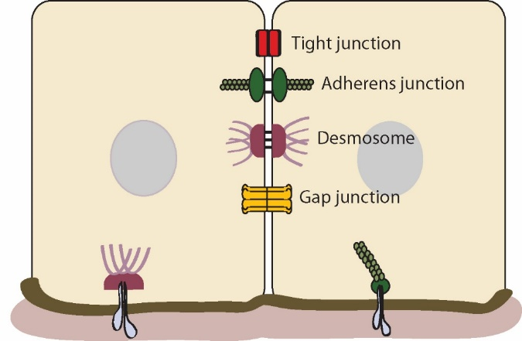All right, good to know! My video on body patterning is a week or two away still, so I will use this period to mull over ways to apply its subject matter to the multicellular stage. The good thing is that writing for the video forced me to generalize and simplify current insights on the developmental biology of metazoans, from cnidarians to vertebrates. I think this will help boiling it down to concepts that presumably will be codeable, computable and playable in the end.
With the regards to the transition from microbe to multi-cell stage, I do have some remarks already. The proposed idea of “catching” foreign cells (even if it is the same species) and incorporate these into a multicellular whole does sound like fun gameplay, but I feel it’s starting to depart a little bit too far from biological reality. Obviously, we shouldn’t sacrifice too much gameplay on the alter of science, but I think it’s worth exploring concepts that are more accurate to see if they’re not just as fun/codeable, if not more.
Introducing “binding agents” is the way forward in any case, so I support that. However, instead of catching foreign cells, I’d propose a system of budding through cellular division. I imagine something like this:
- Some time after acquiring the nucleus, the player can access the “binding agent” trait.
- When “binding agents” are added, the player can then continue to acquire resources for cell division the usual way.
- However, instead of going into the cell editor again, after having gathered enough resources, the player can opt for “budding”, meaning that an exact copy of the cell is attached to the parent cell.
- I can imagine the player being able select what side the new cell should be added or some such.
- When the budding process is completed and confirmed by the player, the new unit can continue in unison, forewarning double trouble in the primordial ocean.
- This process can continue until the player has acquired enough cells (and perhaps certain other traits like “junction agents”; see below) to enter the multi-cell stage.
This is perhaps a good example of how a few tweaks can result in something that is both a low-threshold continuation of current gameplay, fun and actually truer to the science at the same time!
I don’t even think we need to go deeper than this, but for interest I can recommend a cursory look at the following article, of which the illustrations and diagrams alone are already quite elucidating:
In animals, there are basically two main types of molecular agents involved in multicellularity:
- Collagen (or similar), which is basically “intercellular glue” of fibrous molecules wrapping around and wrangling neighbouring cells together in an extracellular matrix.
- Junction proteins which act like rivets going through adjacent membranes tying them together. There are different kinds of junctions, some of which anchor the cells to collagen fibers and others form conduits for sharing resources or even signals and thus enable intercellular communication.

Now, to simplify all of this, we could just conflate it as “binding agents” and that is fine. Or maybe we could fork it into two, as what we perhaps in-game could call “junction agents” (which I already hinted at) give special abilities.
But again: I think the simple little scenario above the horizontal line should already be good enough.